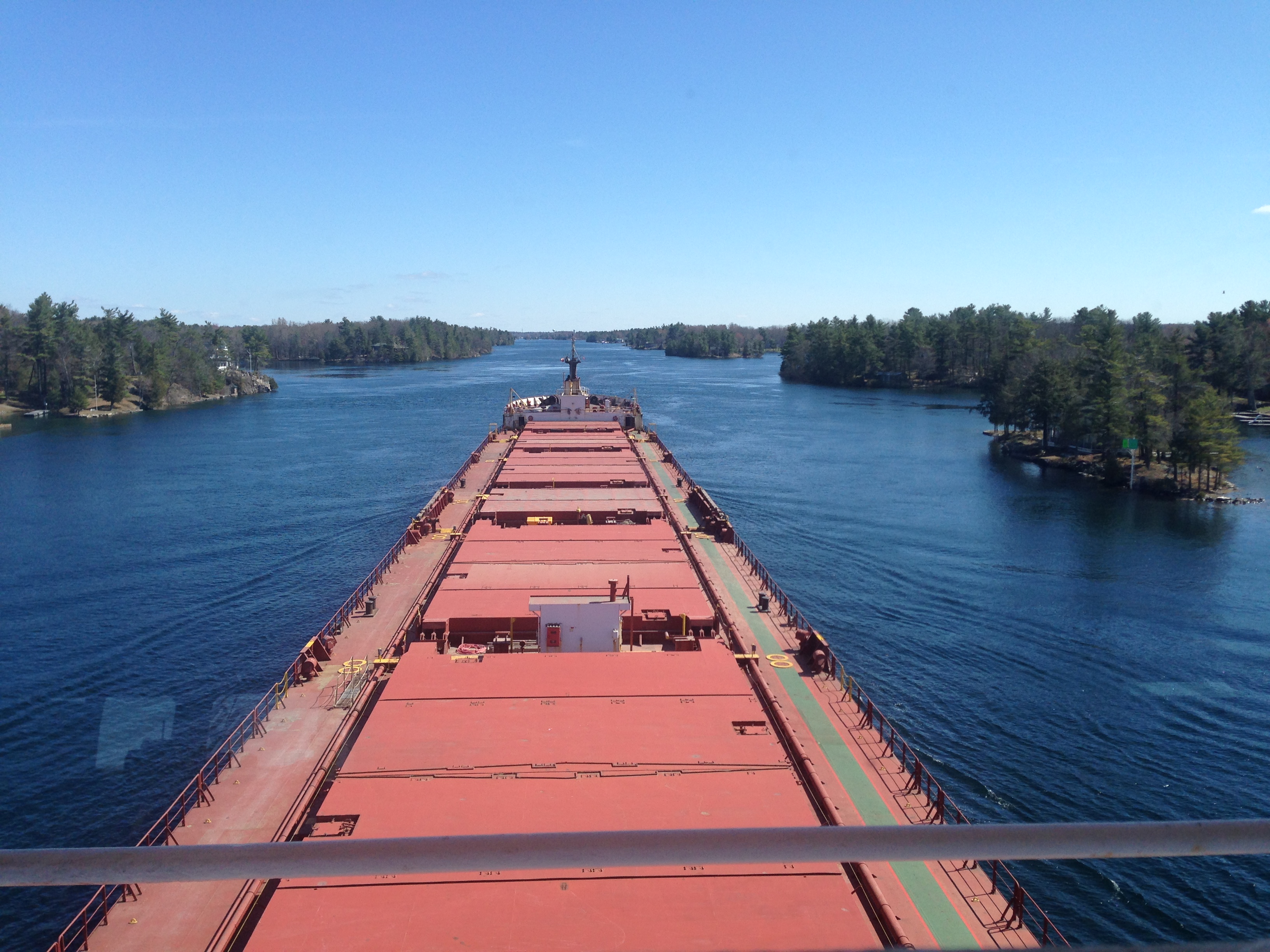-
Posts
3,252 -
Joined
-
Last visited
Content Type
Profiles
Forums
Gallery
Events
Everything posted by realworkingsailor
-
"I swear.... it looked a lot smaller in the catalogue" Hooo Boy! Are you in for some fun with that one...
-
Yeah.. I'd call that a cowl vent.... Too bad we can't get these old-time photographers to take better photos these days.. Andy
- 326 replies
-
- vinal haven
- steam ship
-
(and 1 more)
Tagged with:
-
On occasion I have been known to pass out..
- 326 replies
-
- vinal haven
- steam ship
-
(and 1 more)
Tagged with:
-
I'm thinking so too... since you don't see any cowl vents for air intake for the boilers. Andy
- 326 replies
-
- vinal haven
- steam ship
-
(and 1 more)
Tagged with:
-
The gun tackle probably would have been cast off after running out the gun. Like you suggested, the recoil would destroy anything heavier than the breach rope. Most modelers do capture this detail, in that they try to have the gun tackles hooked onto the truck, rather than seized. The more I think about it, the more I feel that the whole idea of hot guns "jumping" more than cool ones is simply Georgian literary hype. Hollywood is not the first to go about exaggerating for dramatic effect. Andy
-
I don't think you're as likely to get a squib on a smooth bore, muzzle loading canon, they are more likely on breech loading rifled guns with prepared charges. Not saying they're impossible, just much less likely In a muzzle loader, if the gun crew failed to notice the logged ball in the bore initially... as soon as the sponge and worm where sent down the barrel, someone would surely notice something was amiss. And even if they didn't, another loaded charge would sit in front of the lodged shot and might fail to ignite altogether. As for your other two forums.... I can't access the first one and the other... nicht sprechen... sorry... Andy
-
A lot of rope will stretch naturally under load. That is not a sign of imminent failure. Even natural fiber ropes do have some elasticity and will regain some of their shape when the load is removed. I'm sure breech rope renewal was fairly frequent, and it would not have been that hard. Run out the gun and lash the tackles, replace breech rope and retract the gun. Andy
-
A sledge hammer and a concrete wall.... Who could ask for a better way to spend an afternoon Andy
-
I think you also need to look at the physics of the breeching arrangement... Through the breech ring (above the centreline of the gun), down to an eyebolt and ring on the gun carriage (way below the centreline of the gun) and back up to an anchor point on the bulwark. In tension, the rope will want to straighten out as much as possible, resulting in a downward force on the breech of the gun, and an upward force on the carriage, the result is a torque about the breech of the gun, making it "jump". Anyone who's fired a pistol (or seen on fired) is well aware of upward swing of the barrel after the shot has been fired, the recoil is directed to the shooter's hand through the grip which is below the barrel. Same thing as above, only smaller scale. As to whether hot guns jump more than cold ones.. I think it was more to do with stretching of the breech rope, which would allow the gun to recoil further, (thus being able to develop more momentum) before being checked. Andy
-
I'm just emerging from under a cloud of bean dust... what'd I miss?
- 2,191 replies
-
- confederacy
- Model Shipways
-
(and 1 more)
Tagged with:
-
Excellent work... you're just flying through the rigging! Amazing what you've done on such a small scale ship..... would really like to see what you could do with one of a larger scale! Andy
-
Nice little work boat I think I shall join the crowd and follow along Andy
- 745 replies
-
- francis pritt
- mission ship
-
(and 1 more)
Tagged with:
-
What? Putting one build aside in favour of another? This is unheard of.... :P Have fun Kevin, and pick up the Vic when your back in the right mindset Andy
- 1,319 replies
-
- caldercraft
- Victory
-
(and 1 more)
Tagged with:
-
Well.. according to the specs, that strip it 2" long... I counted 53 blocks and spaces along the strip, comes out to dentils that are roughly 0.030" (probably smaller due to the slight excess of the ends, so you're probably closer to 0.025") If it was me, they're really not that expensive, I'd order a set and see what you think in person. Otherwise you could be stuck doing a royal PITA job... Andy
- 326 replies
-
- vinal haven
- steam ship
-
(and 1 more)
Tagged with:
-
Here, check this out: http://grandtline.com/products/arch/ho/ho_scale_architectural_trim.html Down a bit, they offer strips of dentils. I'm assuming that's what's confounding you? (It's also available in 1:48) Andy
- 326 replies
-
- vinal haven
- steam ship
-
(and 1 more)
Tagged with:
-
That's 'cause you're not trying hard enough.... should be averaging one of those every 7.6 minutes......
- 2,191 replies
-
- confederacy
- Model Shipways
-
(and 1 more)
Tagged with:
-
I can see it now, Sjors posing his ship in front of the room door to take more photos next time he has some progress to report, someone unknowingly rushes into the room, slamming open the door..... and smash-o... nuthin' but kindling...... Hope you can lock the door from the inside, with something secure.... like 5/8" chain.... Andy
- 1,873 replies
-
- occre
- san ildefonso
-
(and 1 more)
Tagged with:
-
I could see Augie doing a scratch build next.... Either a Lumberyard/Hahn scratch kit or he's gonna go all Swan class on us.....
- 2,191 replies
-
- confederacy
- Model Shipways
-
(and 1 more)
Tagged with:
About us
Modelshipworld - Advancing Ship Modeling through Research
SSL Secured
Your security is important for us so this Website is SSL-Secured
NRG Mailing Address
Nautical Research Guild
237 South Lincoln Street
Westmont IL, 60559-1917
Model Ship World ® and the MSW logo are Registered Trademarks, and belong to the Nautical Research Guild (United States Patent and Trademark Office: No. 6,929,264 & No. 6,929,274, registered Dec. 20, 2022)
Helpful Links
About the NRG
If you enjoy building ship models that are historically accurate as well as beautiful, then The Nautical Research Guild (NRG) is just right for you.
The Guild is a non-profit educational organization whose mission is to “Advance Ship Modeling Through Research”. We provide support to our members in their efforts to raise the quality of their model ships.
The Nautical Research Guild has published our world-renowned quarterly magazine, The Nautical Research Journal, since 1955. The pages of the Journal are full of articles by accomplished ship modelers who show you how they create those exquisite details on their models, and by maritime historians who show you the correct details to build. The Journal is available in both print and digital editions. Go to the NRG web site (www.thenrg.org) to download a complimentary digital copy of the Journal. The NRG also publishes plan sets, books and compilations of back issues of the Journal and the former Ships in Scale and Model Ship Builder magazines.



